
The 1930s IJN naval fighter
The Nakajima A4N was a carrier-based fighter, last biplane by Nakajima. The first prototype was completed in 1934, but engine issues delayed the entry service until 1936. It was internally called Nakajima YM (factory designation), or Navy Type 95 Carrier Fighter. In all, 221 were built, mostly active during the Chinese War and until its replacement in 1937-38 by the Mitsubishi A5M.
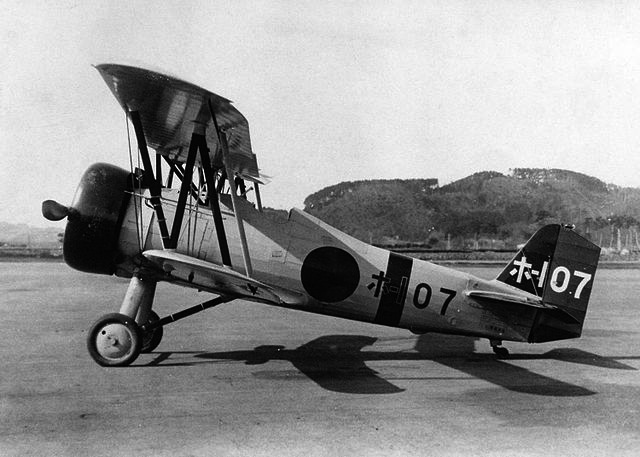
Type 95 Shiki Kansen
The precedessor: Nakajima A2N
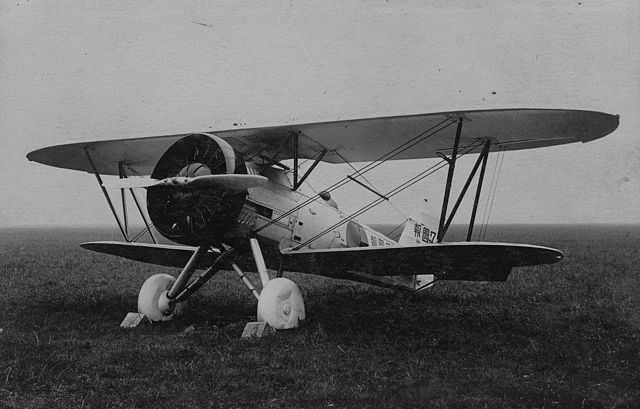
Type 95 Siki Kansen
The A2N was developed as a private venture by Nakajima, intended to fill the carrier-borne fighter niche in 1929. It was based loosely on the Boeing Model 69 and 100, both imported a year before and the same for technical analysis and evaluation. Takao Yoshida was chief designer of the project and created two prototypes: One was designated Navy Type 90 Carrier Fighter (in anticipation of Navy trials, outside specifications). It was ready in December 1929, Powered by a Bristol Jupiter VI engine under licence.
The Navy tested it, but it was rejected as not offering much advantage over the existing Nakajima A1N. The latter was indeed a copy of the British Gloster Gambet, which prototype first flew on 12 December 1927, introduced in early 1929 in active units, and which production was ongoing (151 were delivered). They already equipped IJN Hosho, Kaga and Akagi. But the IJN had an ambitious program of new “sub-treaty” light aircraft carriers, and IJN Ryujo was one of these. Nakajima, like its competitor Mitsubishi knew they would be a greater need for fighters in the near future.
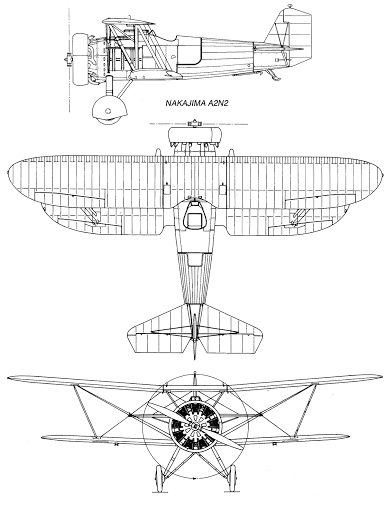
4-view blueprint of the A2N
After the refusal, Jingo Kurihara started a major redesign, leading to the creation in 1930 of another prototype, the Type 91 or A2N1, powered by the improved 432 kW (579 hp) Nakajima Kotobuki 2 engine. It was completed in May 1931 and trialled this year extensively. This time the naval staff was impressed by its performances and accepted it in April 1932 for service. 100 were ordered (the most common number given), bbut the company started to work on the next iteration, believing it had now secured the IJN fighter market for years. The production run went on in 1936 with a two-seat trainer called the A3N3-1, with 66 built until 1939 as advanced trainer for the next A2N.
Evolution
- A2N1 (Navy Type 90-I Carrier Fighter) Guns located in both sides of the nose, but few produced.
- A2N2 (Type 90-II) – Guns transferred to the upper surface of the nose, the fuel tanks mounted on the fuselage sides.
- A2N3 (Type 90-III) – principal production variant. 5° of dihedral on upper mainplane.
- A3N3-1 (Navy Type 90 training fighter) two-seat trainer: 66 built 1936-39.
The A2N In Combat
In 1932, Minoru Genda, later famous for its constribition to the attack at Pearl Harbor, formed a flight demonstration team. It was called the “Genda’s Flying Circus”, and was used to promote naval aviation. He flew the A2N all across the country, creating vocations in the youth, some of these ending as kamikaze in 1944-45. The Type 90 Carrier-based fighter was as planned the main fighter of IJN Hōshō, Kaga and Ryūjō, replacing completely the Mitsubishi 1MF. The A2N was also of course deployed in China, taking part in the Mandchurian incident and northern air force patrols, and the first air battles of the Second Sino-Japanese War in 1937. However production ceased in 1936 and the type ws considered already obsolescent. Mitsubishi notably already worked on a new monoplane, more promising. Air-combat units flew the A2N in many high-profil operations such as Japanese troop-landings in the Battle of Shanghai (16 August 1937), where Akio Matsuba from Kaga shot-down a Chinese Douglas O-2M, followed by many other victories. The first aces of the IJN were A1N pilots, but the model by that time was already uperseded by the A4N, and soon the A5M as well.
Brief specs:
6.183 x 3.025 m, wingspan: 9.37 m (30 ft 9 in), weight 1,045 kg/1,550 kg (3,417 lb), Powerplant Nakajima Kotobuki 2 9-cylinder air-cooled radial piston engine 343–433 kW (460–580 hp) with a 2-bladed Hamilton Standard fixed-pitch metal propeller. Top speed 293 km/h (182 mph, 158 kn), cruise 167 km/h, Range 500 km (310 mi, 270 nmi), ceiling: 9,000 m (30,000 ft), climb rate 3,000 m (9,843 ft)/5 minutes. It was armed with two fixed forward firing 7.7 mm (0.303 in) machine guns but carried no other payload.
Development of the Nakajima A4N
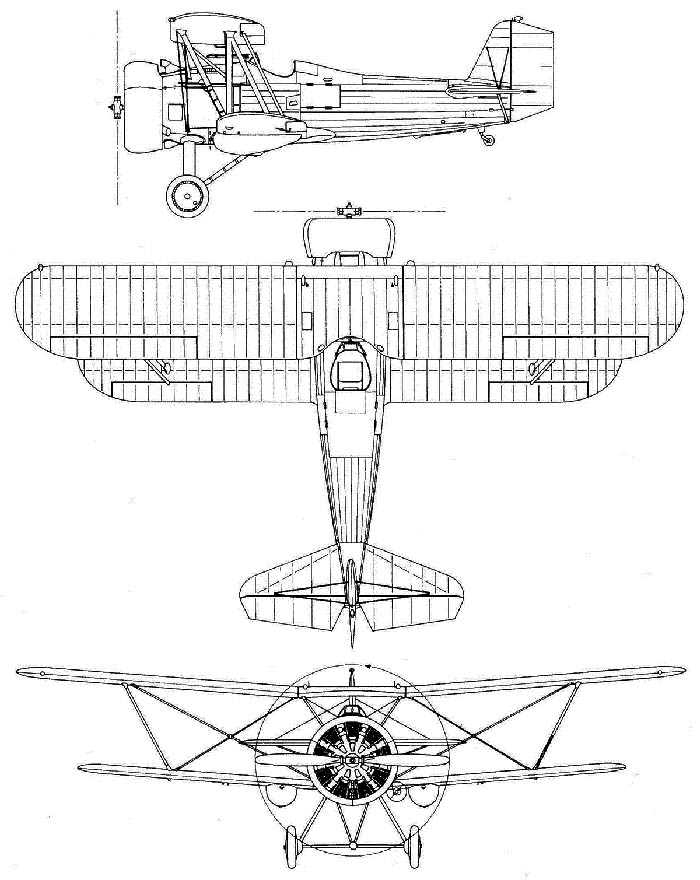
4-view blueprint of the A4N
The Imperial Japanese Navy developed official requirements for a new “9-Shi specification” carrier-based aircraft one of these being a fighter, in order to replace the main Nakajima A2N. In February 1934 this specification was issued to Mitsubishi while instructing Nakajima to modernize its A2N. Takao Yoshida and Shinobu Miyake took the head of the new design team. The first prototype called Nakajima YM flew for the first time in October 1934, and flew in early 1935. There was an hypothetic A3N in 1933, but the model was never developed further.
The first tests revealed a top speed of 352 km/h at 3,200 m, matching the official specification. However on February 1, 1935, Mitsubishi presented its Ka-14 prototype, forerunner of its future A5M? Inspired by the Boeing P26, it first flew that day. The Navy was faced with two fighters of similar performances, one monoplane, the other biplane, and there were two school of thoughts about them. Some believed the monoplane was not a viable solution and just a fad. So the two companies stuck to their guns and defended their “baby”.
At last, the Navy made comparative tests, by selected combat pilots. The end result was that the Mitsubishi prototype had a better high speed, Nakajima better maneuverability. This just confirmed the general opinion about monoplanes versus biplane worldwide at the time. Soon, the Navy realized it could have both fighters, one reserved for escort and dogfights, the other as interceptor, and given the planned construction of two new carriers, replacing existing parks and limited production capacity of both manufacturers, started to discuss about the possibility to have both models accepted.
Further tests took place at the end of 1935 conducted by Lieutenant Minoru Genda and Lieutenant Ryosuke Nomura, plus other selected, high profile pilots. Since they were celebrities at the time, this new test took almost a public importance. A more extensive palette of tests was performed, and according to the results the Nakajima fighter won, notably due to its superiority in a popular aerobatic tactic at the time, the so-called “dog dump”. The Navy however did not sidelined the A5M for long as it would came back soon, with the needs of the 1937 war. The first production fighter was designated A4N1, and classified in the Navy ordnance as the “Type 95 carrier-based fleet fighter.”
Design
The new A4N was similar to the A2N, but still with important differences. Dimensions of the airframe were slightly larger, the engine was a more powerful Nakajima Hikari 1 capable of 730 hp with 600 liters of capacity. The single-bay chassis was redesigned, with split struts combined for better stiffness and increasing rigidity. Also a tailwheel was added for better control on the ground. To increase the range, suspended tanks were installed under the left or right wing. They allowed the A4N to reach 950-980 km, but generally capped to 845 km with a reserve for dogfighting. Armament comprised two Type 97 7.7 (0.3 inches) machine guns and the power to weight ratio was now positive to such point, the wings were reinforced to carry a limited bomb load, up to 120 kg (either the standard light 30 kg or heavier 60 kg models).

Nakajima Kobuki 1 engine
Design
Engine:
Nakajima Hikari 1 9-cylinder air-cooled radial piston engine, 500 kW (670 hp) to 544 kW (730 hp). A classic star engine, long developed for the Kobuki and a British model, but modified along the lines of the Wright used in Boign models, and a lot of local modifications to improve its performances. This was a sturdy engine, which equipped most IJN models: The Aichi D1A2 and D3A prototype, Kawasaki Ki-45 prototype, Mitsubishi F1M1, Nakajima B5N1, C3N and Yokosuka B4Y1. The Hikari 1 developed 820 hp (610 kW) which was considerable in 1935, but the Hikari 1 kai was pushed to 730 hp (540 kW), the Hikari 2 up to 840 hp (630 kW) and the more tamed Hikari 3 offered 770 hp (570 kW).
Armament:
Two fixed, forward-firing 7.7 mm (0.8 inches) Type 97 machine guns. Two 30 kg (66 Ibs.) or two 60 kg (132 Ibs.) bombs underwings.
Detailed specs
A4N1 1931 |
|
| Crew: | One pilot |
| Fuselage Lenght | 6.64 m (21 ft 9 in) |
| Wingspan | 10 m (32 ft 10 in) |
| Height | 3.07 m (10 ft 1 in) |
| Wing Area | 22.89 m2 (246.4 sq ft), load 76.9 kg/m2 (15.8 lb/sq ft) |
| Empty weight: | 1,276 kg (2,813 lb) |
| Gross weight: | 1,760 kg (3,880 lb) |
| Powerplant: | Nakajima Hikari 1 9-cyl. 670-730 hp (500-544 kW) |
| Propellers: | 2-bladed Hamilton fixed-pitch metal propeller |
| Maximum speed: | 352 km/h (219 mph, 190 kn) at 3,200 m (10,499 ft) |
| Service ceiling: | 7,740 m (25,390 ft) |
| Range: | 846 km (526 mi, 457 nmi) |
| Time to altitude: | 3,000 m (9,843 ft) in 3 minutes 30 seconds |
| Power/mass: | 0.2884 kW/kg (0.1754 hp/lb) |
| Armament | 2x 7.7 mm LMGs, 2×30/60 kgs bombs |
The A4 in action

A4Ns in formation in China, 1937 (world of warships)
However, the service of this biplane was short-lived, since the leadership of the Imperial Navy was convinced of the superiority of monoplanes over biplanes. The tactics of using the A5M high-speed monoplane proved the unconditional advantages of this scheme in fighter aircraft, but the rearmament was carried out for a very long time. By the beginning of the Sino-Japanese War, as part of the naval aviation, only the 12th mixed kokutai (Luda airfield, Dairen) had 12 A4N fighters in its composition. The functions were short-range escort operations and air defense.
The first battles were unsuccessful: on August 24, 1937, the commander of the 24th Fighter Squadron of the Air Force of the Republic of China, Captain Liu Chuikang, in a Curtiss Hawk III fighter shot down an A4N northwest of Shanghai, and the pilot was killed. On August 25, the Japanese from the aircraft carrier “Hosho” tried to intercept He-111A bombers, damaging two bombers. In August, the 12th Kokutai went on vacation, but returned to service on September 5 as part of the 3rd Fleet, stationed at Kunda Air Base (Shanghai), and joined the support of the ground forces. A4Ns also became stormtroopers. The losses intensified: on September 18, the plane of senior lieutenant Kazue Sato was shot down in the Baoding area by air defense forces, and the captain, having made an emergency landing, was killed in a firefight. In October-November, the fighters began to be replaced by Mitsubishi monoplanes. Since December 1937, the Kanoya kokutai began to operate in the Shanghai area, which had the A4N daitai (squadron), but they were only engaged in air defense. A4N have become only a tool to make up for losses.
On April 13, 1938, the aircraft carrier “Kaga”, having several A4N fighters in its air group, supported the attacks on Canton, and that day at least one A4N fighter was shot down: Lieutenant Teng Chunkai from the 28th squadron distinguished himself about two aircraft shot down, but the second was the Aichi D1A deck bomber. Lieutenant Kwan Yensun reported another A4N shot down and two injured. In response, two Japanese shot down two Gloster Gladiator fighters: Chief of the 2nd class Hatsuo Hidaka (pilot U Bojun died) and Chief Petty Officer Chono distinguished themselves. On April 25, 1938, the air group of the Soryu aircraft carrier (Nanjing airport) joined the hostilities, and in June the 15th kokutai with old aircraft was also abandoned. The reason for such a massive inclusion of the Nakajima A4N in the battle was the large losses in aircraft. On July 16, Chinese Air Force bombers launched a bombardment of the airfield, and the 15th Kokutai repelled the attack, shooting down three planes. Chief Petty Officer Ichiro Higayashima and Petty Officer 2nd Class Yoshiharu Matsumoto distinguished themselves.
In March, the Kanoya Kokutai withdrew the A4N, in April the Soryu and Kaga aircraft carriers withdrew their aircraft, and in September 1938 the 15th Kokutai abandoned them as well. For a short time, the aircraft was based on the Ryujo aircraft carrier as a training aircraft. By the end of 1938, it was gone in combat units: all Nakajima A4Ns became training ones.
References
surfcity.kund.dalnet.se
shanghai1937.tv
surfcity.kund.dalnet.se
aviastar.org
pacificeagles.net
www.historyofwar.org
ww.aviastar.org
www.scalemates.com
Green, William; Swanborough, Gordon (1994). The Complete Book of Fighters. New York: Smithmark.
Mikesh, Robert C.; Abe, Shorzoe (1990). Japanese Aircraft, 1910-1941. London: Putnam Aeronautical Books.
Passingham, Malcolm (November 1995). “Les premiers chasseurs embarqués Nakajima (2e partie): Le A2N Type 90”
Gustavsson, Hakans. “Håkans Aviation page – Sino-Japanese Air War 1937”. Biplane Fighter Aces – China.
Sun, Lianggang. “Shanghai 1937 – Where World War II Began”. SHANGHAI 1937: WHERE WORLD WAR II STARTED.
Gustavsson, Hakans. “Japanese biplane fighter aces – Akio Matsuba”. Biplane Fighter Aces – Japan.
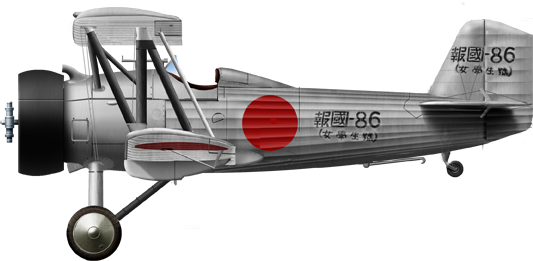
The initial prototype tested in 1934.
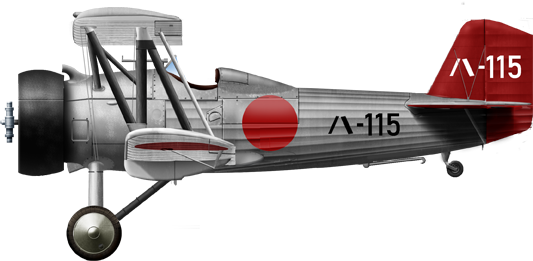
AKN-1 IJN Akagi, 1936
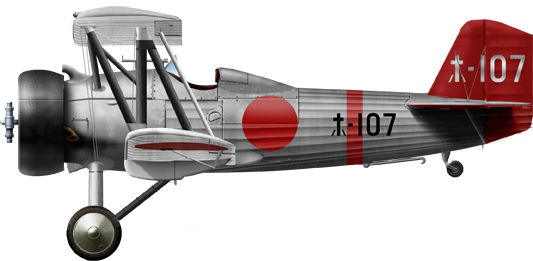
A4N1, 12th Kokutai 1936
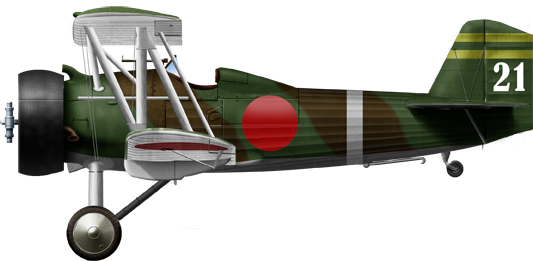
12th Kokutai, Shanghai August 1937
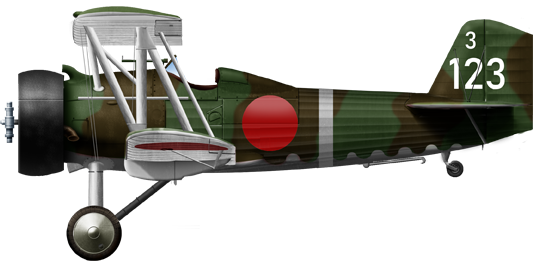
Unknown unit, China winter 1937/38
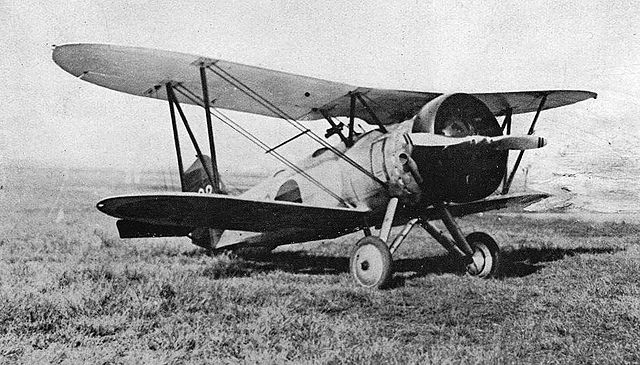
A2N3-1
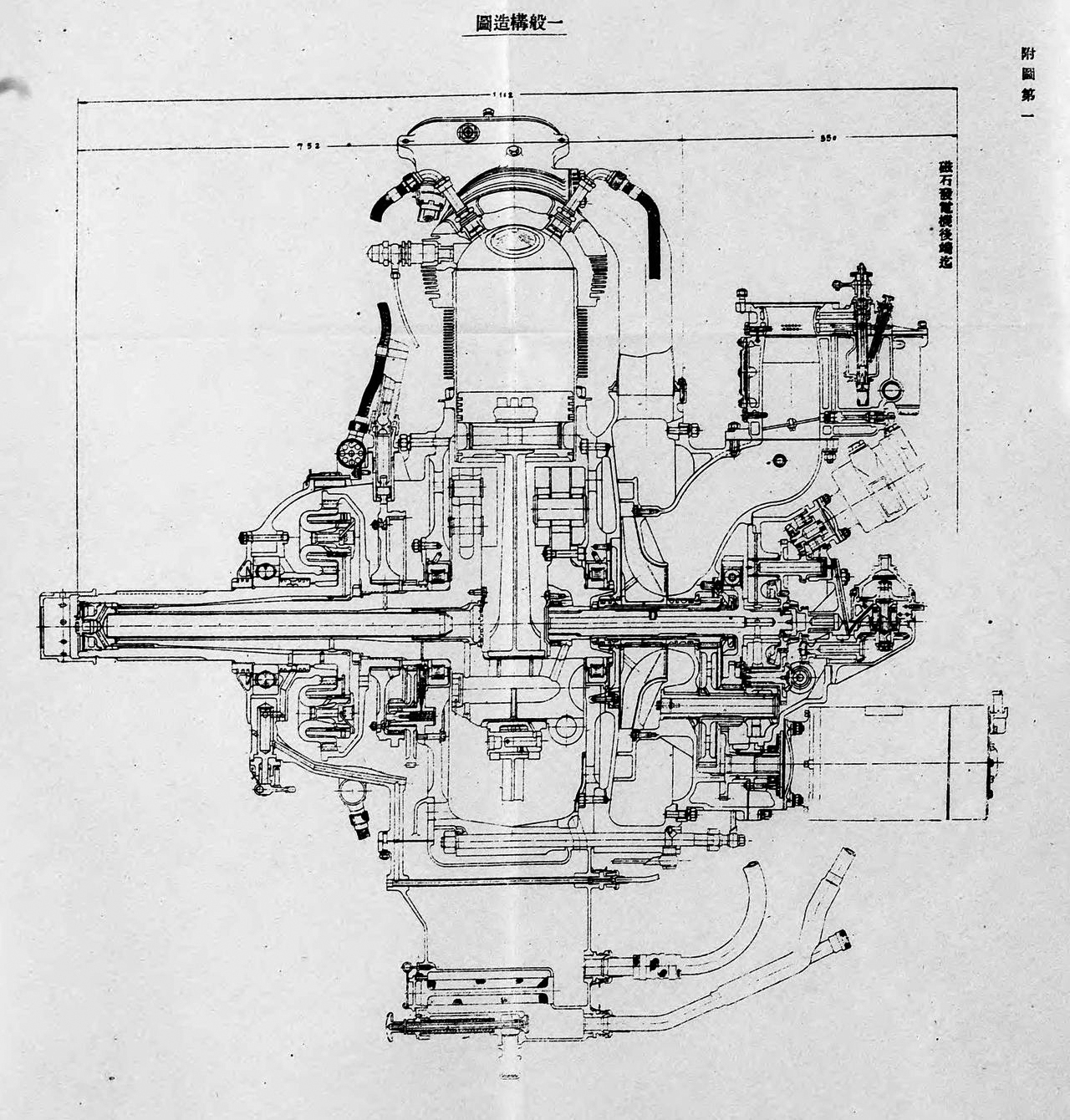
Nakajima Type 97 650 hp engine
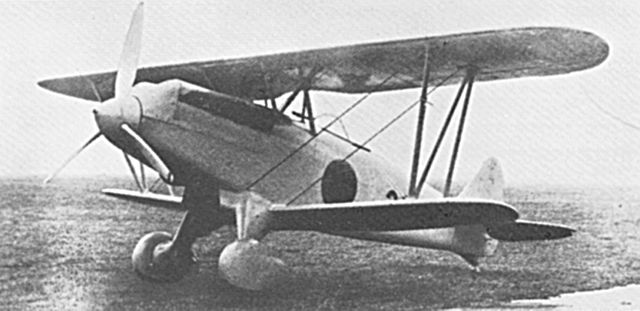
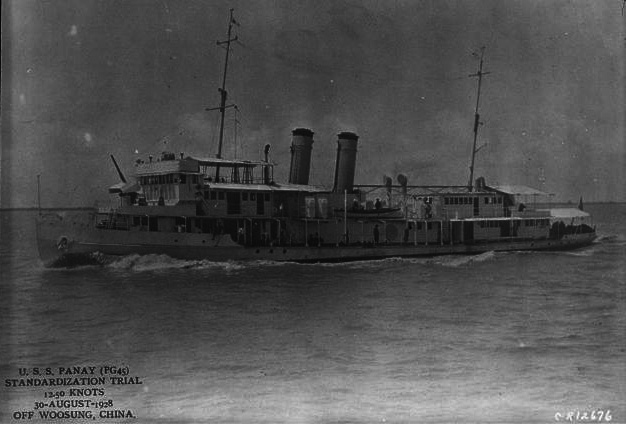
The 1937 Panay incident, where A4Ns were involved in


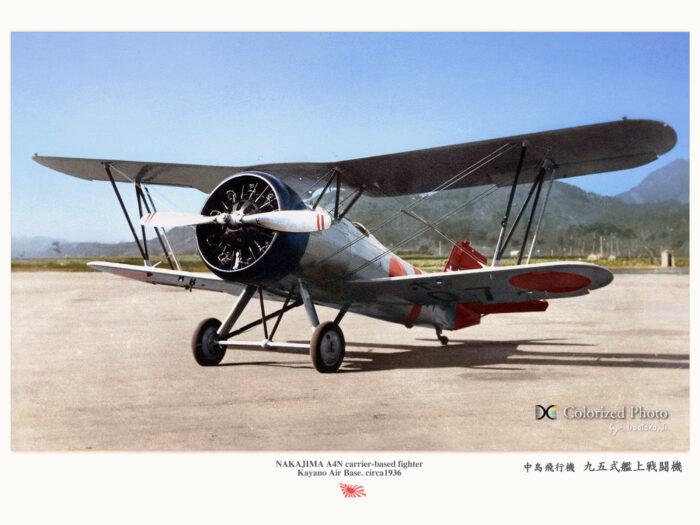
 Latest Facebook Entry -
Latest Facebook Entry -  X(Tweeter) Naval Encyclopedia's deck archive
X(Tweeter) Naval Encyclopedia's deck archive Instagram (@navalencyc)
Instagram (@navalencyc)





 French Navy
French Navy Royal Navy
Royal Navy Russian Navy
Russian Navy Armada Espanola
Armada Espanola Austrian Navy
Austrian Navy K.u.K. Kriegsmarine
K.u.K. Kriegsmarine Dansk Marine
Dansk Marine Nautiko Hellenon
Nautiko Hellenon Koninklije Marine 1870
Koninklije Marine 1870 Marinha do Brasil
Marinha do Brasil Osmanlı Donanması
Osmanlı Donanması Marina Do Peru
Marina Do Peru Marinha do Portugal
Marinha do Portugal Regia Marina 1870
Regia Marina 1870 Nihhon Kaigun 1870
Nihhon Kaigun 1870 Preußische Marine 1870
Preußische Marine 1870 Russkiy Flot 1870
Russkiy Flot 1870 Svenska marinen
Svenska marinen Søværnet
Søværnet Union Navy
Union Navy Confederate Navy
Confederate Navy Armada de Argentina
Armada de Argentina Imperial Chinese Navy
Imperial Chinese Navy Marinha do Portugal
Marinha do Portugal Mexico
Mexico Kaiserliche Marine
Kaiserliche Marine 1898 US Navy
1898 US Navy Sovietskiy Flot
Sovietskiy Flot Royal Canadian Navy
Royal Canadian Navy Royal Australian Navy
Royal Australian Navy RNZN Fleet
RNZN Fleet Chinese Navy 1937
Chinese Navy 1937 Kriegsmarine
Kriegsmarine Chilean Navy
Chilean Navy Danish Navy
Danish Navy Finnish Navy
Finnish Navy Hellenic Navy
Hellenic Navy Polish Navy
Polish Navy Romanian Navy
Romanian Navy Turkish Navy
Turkish Navy Royal Yugoslav Navy
Royal Yugoslav Navy Royal Thai Navy
Royal Thai Navy Minor Navies
Minor Navies Albania
Albania Austria
Austria Belgium
Belgium Columbia
Columbia Costa Rica
Costa Rica Cuba
Cuba Czechoslovakia
Czechoslovakia Dominican Republic
Dominican Republic Haiti
Haiti Hungary
Hungary Honduras
Honduras Estonia
Estonia Iceland
Iceland Eire
Eire Equador
Equador Iran
Iran Iraq
Iraq Latvia
Latvia Liberia
Liberia Lithuania
Lithuania Mandchukuo
Mandchukuo Morocco
Morocco Nicaragua
Nicaragua Persia
Persia San Salvador
San Salvador Sarawak
Sarawak Uruguay
Uruguay Venezuela
Venezuela Zanzibar
Zanzibar Warsaw Pact Navies
Warsaw Pact Navies Bulgaria
Bulgaria Hungary
Hungary

 Bundesmarine
Bundesmarine Dutch Navy
Dutch Navy Hellenic Navy
Hellenic Navy Marina Militare
Marina Militare Yugoslav Navy
Yugoslav Navy Chinese Navy
Chinese Navy Indian Navy
Indian Navy Indonesian Navy
Indonesian Navy JMSDF
JMSDF North Korean Navy
North Korean Navy Pakistani Navy
Pakistani Navy Philippines Navy
Philippines Navy ROKN
ROKN Rep. of Singapore Navy
Rep. of Singapore Navy Taiwanese Navy
Taiwanese Navy IDF Navy
IDF Navy Saudi Navy
Saudi Navy Royal New Zealand Navy
Royal New Zealand Navy Egyptian Navy
Egyptian Navy South African Navy
South African Navy






























 Ukrainian Navy
Ukrainian Navy dbodesign
dbodesign